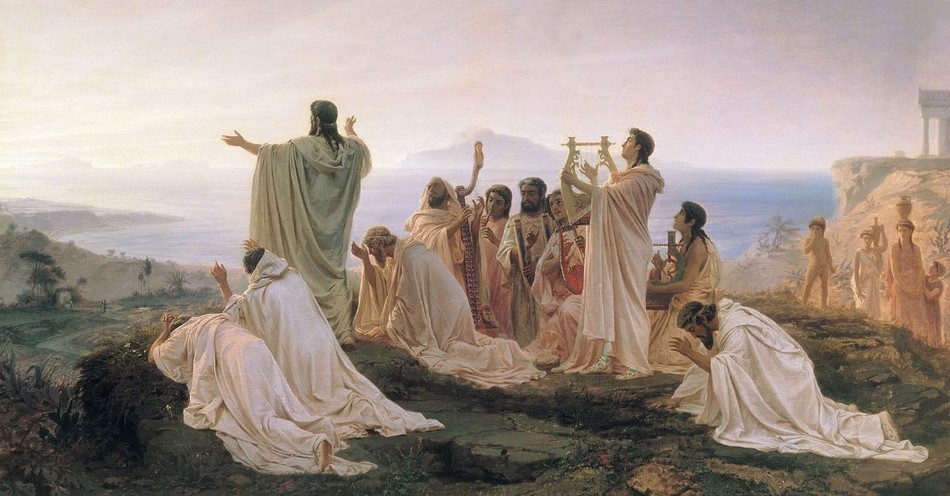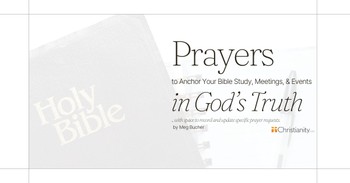Christ is returning for his church. On that, nearly all Christians agree. But there is no universal consensus as to what that second coming will be like. Over the history of the church, there have been a number of frameworks developed to describe Christ’s return and the events surrounding that return. And at the center of each of these is a short passage in Revelation 20:1-10.
This passage describes the binding of Satan; the resurrection, judgment, and a thousand-year reign of martyrs along with Christ; followed by the loosing of Satan, a final battle, and judgement on Satan. The thousand-year period in the middle of this passage is termed the millennium. And each of the major frameworks is identified by how they understand this period.
Premillennialists understand Christ’s return to come prior to this millennial period. Postmillennialists and Amillennialists understand Christ’s return to occur after the millennial. They differ in that Postmillennialists see the millennial as a physical reality on earth while Amillennialists see it as a spiritual reign in heaven.
What is Amillennialism?
Amillennialism is actually misnamed. The ‘a’ at the beginning means ‘no’, indicating the proponents of this position believe there will be no millennial reign. But that is not accurate. A better title would be something like ‘realized millennialism’, indicating that we are currently in the millennium.
Amillennialism is not new. Many throughout the history of the church have held it. And by the time of Augustine, it had become the dominant view of the church. It is still the dominant view of the Eastern Orthodox Church, the Roman Catholic Church, and many Protestants. And it was the view of the reformers, including Calvin and Luther.
Amillennialism understands the Kingdom of God proclaimed by Jesus and his apostles to be synonymous with the millennial kingdom of Revelation 20:4-6. The kingdom of God is a present-day reality with Christ ruling from heaven. And it is a kingdom populated by all those who have given their lives to the lordship of Jesus.
The Millennium
So how do Amillennialists understand these 10 verses in Revelation 20 that talk about Satan’s binding, the thousand-year rule of Christ, followed by the release of Satan? First, we do not understand them to be symbolic. They are describing real events. Secondly, we do understand that there is much symbolism throughout the book of Revelation. And, finally, that Revelation was written to give encouragement to the church of its day. While it does point to end times, it was also about what was happening in the first century.
Satan’s Binding
Satan’s binding seems to usher in this thousand-year rule. So, when does this binding occur? While some will point to this being a future event, the Bible gives plenty of clues to indicate that it has already occurred.
-
In Matthew 12:28-29 the strong man (Satan ?) is tied up and his house robbed.
-
In John 12:31 Jesus, just prior to the cross, says that the time for judgment has come. And the prince of this world would be driven out.
-
In Colossian 2:15 Paul says that Jesus triumphed over satanic powers by the cross.
-
In Hebrews 2:14-15 we read that Christ, by his own death, destroyed the power of the devil.
-
And, in 1 John 3:8, John says that Christ appeared to destroy the work of the devil.
Satan’s influence over the world seems great right now. But he is bound and limited in his ability to deceive the nations. But that binding will come to an end at some time in the future.
The First Resurrection
Revelation 20:4-6 is less about a thousand-year rule and more about what it calls the first resurrection. This resurrection involves only believers. Believers who have given their lives for Jesus and refused to worship the beast. These believers will reign with Christ for this thousand years and will not be harmed by the second death. The rest of the dead do not come to life until the thousand years are over.
So, who are these who participate in the first resurrection? While some would argue that they are limited to only tribulation martyrs, Amillennialists believe that these include all believers who have died. In Philippians 1:23 Paul expresses that he longs to depart and to be with Christ. He anticipates that at his physical death he will enter the presence of Christ.
We see this resurrection not as being a one-time event at some point in the future. But rather as an ongoing harvest of believers. Each of us, when we leave this life, is ushered into the presence of Christ and rule in his kingdom.
Duration of the Millennium
Amillennialists believe that the millennium is a heavenly rule inaugurated at the death and resurrection of Christ and concluding at his return. The thousand-year span given in Revelation 20:1-10 is not a literal thousand years. Rather it symbolizes a long period. It represents the entire church age from the cross to the second coming.
The Last Battle
In Revelation 20:7-10 Satan is released from his prison, deceives the nations, and gathers them together to do battle. He leads his army against the camp of God’s people, but fire from heaven destroys his army and Satan himself is cast into the Lake of Fire. The same Lake of Fire holds the Beast and the False Prophet, and that will hold those whose names are not written in the Book of Life.
But this is not the only great battle mentioned in Revelation. In Revelation 16:12-14 the sixth angel pours out his bowl, and a great army gathers for the battle on the great day of God almighty. There is no mention of this battle being fought. But it would seem to be the same battle described in Revelation 20:7-10.
In Revelation 19:19-20 the Beast and False Prophet gather the kings of the earth and their armies to do battle against a heavenly rider on a horse. A rider that appears very much to be Jesus. And the result is the same as the battle in Revelation 20:7-10. Destruction and the Lake of Fire. Rather than three separate battles, these all appear to be the same battle mentioned three different times.
This battle is fought at the end of the age, and ushers in the final resurrection and judgment of the dead along with the New Heaven and Earth. It represents Satan’s final attempt to thwart God’s plan for his creation.
Summary of Amillennialism
Amillennialists believe in a literal reign of Christ, along with his resurrected saints. But we believe this reign is a heavenly one rather than on the earth. We believe it is a present-day reality. And that it involves all believers, in particular, those who have died and are with Christ.
Ed Jarrett is a long-time follower of Jesus and a member of Sylvan Way Baptist Church. He has been a Bible teacher for over 40 years and regularly blogs at A Clay Jar. You can also follow him on Twitter or Facebook. Ed is married, the father of two, and grandfather of two lovely girls. He is retired and currently enjoys his gardens and backpacking.



.jpg)
